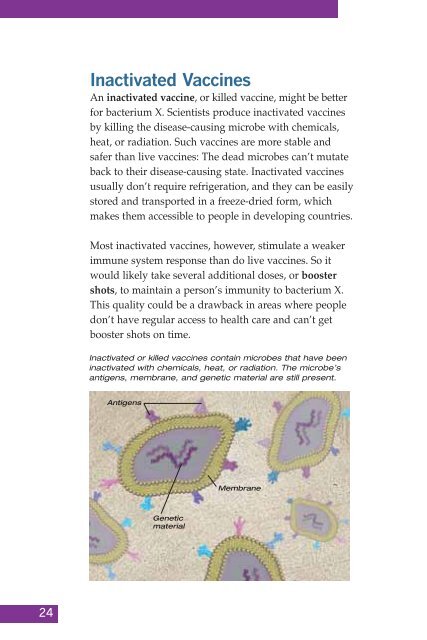Understanding Vaccines What They Are How They Work - VIOLIN
Understanding Vaccines What They Are How They Work - VIOLIN
Understanding Vaccines What They Are How They Work - VIOLIN
Create successful ePaper yourself
Turn your PDF publications into a flip-book with our unique Google optimized e-Paper software.
24<br />
Inactivated <strong>Vaccines</strong><br />
An inactivated vaccine, or killed vaccine, might be better<br />
for bacterium X. Scientists produce inactivated vaccines<br />
by killing the disease-causing microbe with chemicals,<br />
heat, or radiation. Such vaccines are more stable and<br />
safer than live vaccines: The dead microbes can’t mutate<br />
back to their disease-causing state. Inactivated vaccines<br />
usually don’t require refrigeration, and they can be easily<br />
stored and transported in a freeze-dried form, which<br />
makes them accessible to people in developing countries.<br />
Most inactivated vaccines, however, stimulate a weaker<br />
immune system response than do live vaccines. So it<br />
would likely take several additional doses, or booster<br />
shots, to maintain a person’s immunity to bacterium X.<br />
This quality could be a drawback in areas where people<br />
don’t have regular access to health care and can’t get<br />
booster shots on time.<br />
Inactivated or killed vaccines contain microbes that have been<br />
inactivated with chemicals, heat, or radiation. The microbe’s<br />
antigens, membrane, and genetic material are still present.<br />
Antigens<br />
Genetic<br />
material<br />
Membrane


